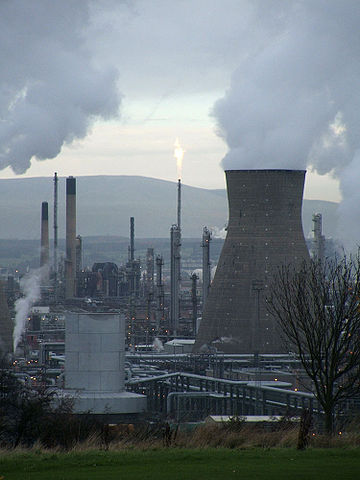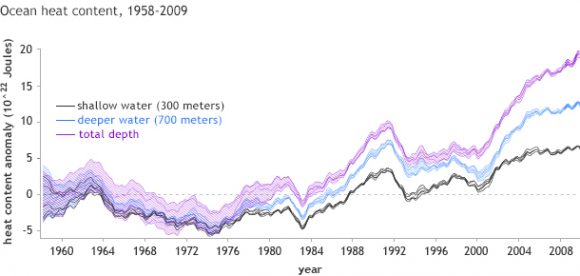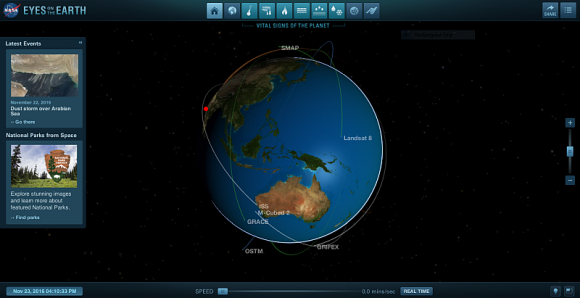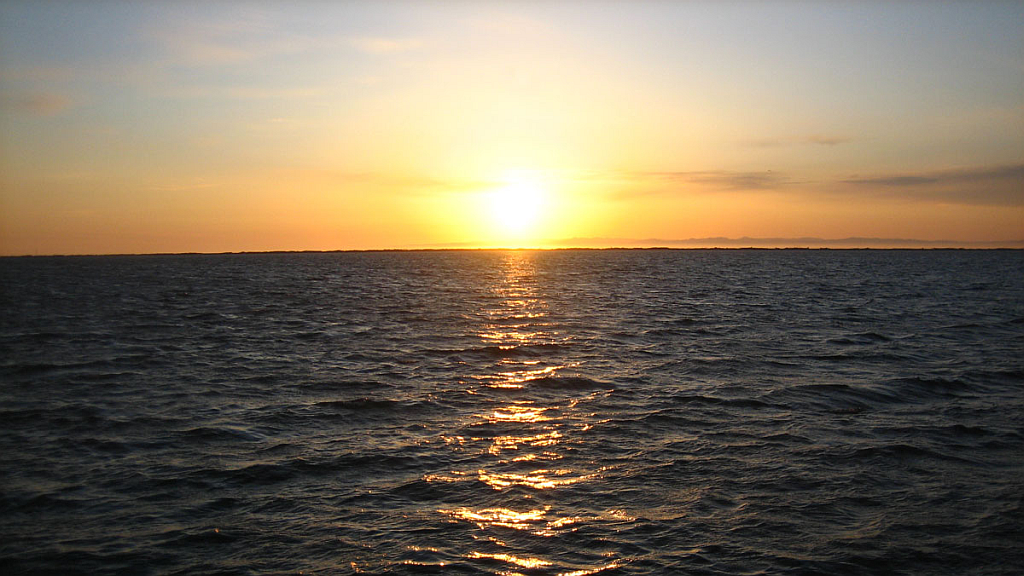A reprieve from Global Warming? A hiatus? That would be nice, wouldn’t it? But in this case, a hiatus is not quite what it seems.
Everybody knows that global warming is partly caused by human activities, largely our use of fossil fuels. We understand how it works and we fear for the future. But there’s been a slowdown in the global mean surface temperature increase between 1998 to 2013. We haven’t lowered our emissions of greenhouse gases (GHGs) significantly during that time, so what happened?

A new multi-institutional study involving NASA’s Jet Propulsion Laboratory (JPL), the National Oceanographic and Atmospheric Institute, and others, concludes that Earth’s oceans have absorbed the heat. So instead of the global mean surface temperature rising at a steady rate, the oceans have taken on the job as global heat sink. But what’s the significance of this?
“The hiatus period gives scientists an opportunity to understand uncertainties in how climate systems are measured, as well as to fill in the gap in what scientists know.” -Xiao-Hai Yan, University of Delaware, Newark
In terms of the on-going rise in the temperature of the globe, the hiatus is not that significant. But in terms of the science of global warming, and how well we understand it, the hiatus gives scientists an opportunity.
The new paper, titled “The Global Warming Hiatus: Slowdown or Redistribution?” grew out of the U.S. Climate Variability and Predictability Program (CLIVAR) panel session at the 2015 American Geophysical Union fall meeting. From those discussions, scientists reached consensus on three key points:
- From 1998 to 2013, the rate of global mean surface warming slowed, which some call the “global warming hiatus.”
- Natural variability plays a large role in the rate of global mean surface warming on decadal time scales.
- Improved understanding of how the ocean distributes and redistributes heat will help the scientific community better monitor Earth’s energy budget. Earth’s energy budget is a complex calculation of how much energy enters our climate system from the sun and what happens to it: how much is stored by the land, ocean or atmosphere.

The paper is a reminder that climate science is complex, and that the oceans play a big part in global warming. As Yan says, “To better monitor Earth’s energy budget and its consequences, the ocean is most important to consider because the amount of heat it can store is extremely large when compared to the land or atmospheric capacity.”
“…”arguably, ocean heat content — from the surface to the seafloor — might be a more appropriate measure of how much our planet is warming.” – from the paper “The Global Warming Hiatus: Slowdown or Redistribution?”
The team behind this new research suggests that saying there’s been a hiatus in global warming is confusing. They suggest “global warming hiatus” be replaced with “global surface warming slowdown.”
There’s a danger in calling it a “global warming hiatus.” Those opposed to climate change and who think it’s a hoax can use that term to discredit climate science. They’ll claim that the “hiatus” shows we don’t understand climate change and the Earth may have stopped warming. But in any case, it’s the long-term trend—change over the course of a century or more—that defines “global warming,” not the change from year to year or even decade to decade.
There’s much more to learn about the oceans’ role in global warming. Research shows that some ocean areas absorb heat much faster than others. But whatever the fine detail of it is, there is broad agreement in the scientific community that the global surface warming slowdown was caused by an increased uptake of heat energy by the world’s oceans.

NASA uses a lot of tools to monitor the Earth’s temperature. For an interesting look at the Earth’s vital signs, check out Nasa’s Eyes. This easy to use visualization tool lets you take a closer look at the Earth’s temperature, CO2 levels, soil moisture levels, sea levels, and other things.


What happened between 1963 and 1975?
i.e. Why was the rate negative?
I am surprised that the rise is 6.5 quadrillion Kw H.
That will work out to somewhere around 40,000 Kilowatt Hours per person per year from 1959 to 2009.
If the period from 1983 to 2009 is considered, the rate is much higher.
Is part of the problem the problem of the soot emissions of China darkening the ice of Greenland and the North pole?
This causes the ice in the Arctic area to melt, but not the Antarctic.
Does this differential lowering of the salinity of the salt water cause ocean current shifts?
More research is certainly in order.
Yes, the salinity of the salt water does make a very big difference.
There is still so much that is not understood about the way the systems work. That is why more research is needed as you have stated.
This was a great recapitulation of the data. I just wanted to point out that the paper by Yan, Boyer, et al. (2016) is a lit review. Illuminating findings, nonetheless!
I’ve been going about this for several years now. The real problem is not what should have been predictable from high-school physics about the specific heat of water when the first models forecasting global warming (atmospheric T) with a very significant positive T/time were published with high reliability envelopes some ~18 years ago; in spite of that being a rather obviously fundamental factor that should have been correctly handled in their input algorithms.
No, it is the fact that the global atmospheric T-hiatus was/is real and that a serious climatological right hand has not only acknowledged that over the past 2-3 years when the greenpeace-driven AGW (‘oh yes, atmospheric T is rising, it’s real, and a real threat’) dominated the media, think-tanks, and even academic bodies that should have behaved more responsibly, but have gone beyond to posit plausible hypotheses to actually address what the left hand refused to accept.
But as long as children aren’t taught from grade 1 science on that heat =/= temperature (warmth, to put as fine a point on it as necessary), I expect little change. Integrating the measure of atmospheric heat and lithospheric/oceanic heat and calling it ‘rising T anyway, so there: global warming is happening’ may make good press, but is scientifically intellectually dishonest.
Fortunately, none other than Michael Mann himself earlier this year stated quite plainly that there had been no significant rise in global atmospheric temperature over the past ~ 15 years. Let NASA, NOAA, et al., then, stop re-weighting the input criteria for what constitutes atmospheric warmth: It’s quite simply the temperature of the atmosphere.
If they want to hold that integrated global heat content is a significant determinant of weather, climate, and their (conjectured) impacts, they will have to keep spelling that out. Over and over again, or at most reduce it to an acronym-meme: IGHC.
Precisely the conclusions I reached, Dan 🙂
What I liked, about this story, is when Evan used the words Partly Caused by Humans! Why is it that, some say it is 100% human caused. Any one who does not earn a living from either side of this issue, can see that those who beat the drum of C.C./G.W. rule out the Natural Causes of C.C./G.W. The only reason why, is that they can not get money from Mother Nature, but only from Human’s.
It seems to me that there is another simpler explanation for the observations that no-one seems to be considering. Namely CO2/GHGs are only a minor contributor to atmospheric warming. Then the observed discrepancy between temperature and CO2 levels is understandable. The ocean warming, especially after the recent very strong El Nino could be explained by core magma coming from under the ocean. I understand that monitoring temperatures at the bottom of the Pacific Ocean may not yet be possible because of the enormous pressure at the bottom (~7miles), but when they are developed, this theory is testable. There has been (and continues through the present) much seismic activity in the southern Pacific Ocean and this would be consistent with core magma being the cause of the El Nino and the ocean warming.
Finally, some one who understands, what can cause, the temp. rise of water temps., off of the West Coast, since 2012. It was reported back 4 yrs. ago, of an underwater Volcanic activity off of the cost of CA/OR that is/was causing an increase of the Eastern Pacific Water Temps., that started the drought conditions that have been seen in California. Some folks just do not want to realize there is more then just human’s that have/will effect C.C./G.W. their are the Natural Causes, also. I have never seen any one who beats the drums of C.C./G.W. that it is 100% human caused, to Human’s world wide to stop making more HUMAN’S.
I jeer at all those scientific folks,
‘Cause global warming’s just a Chinese hoax.
I bet my whole lump
On Donald J. Gump
“Snowball” Imhofe, Ted Cruz and the Kochs.
And when Miami sinks beneath the sea,
Don’t point your finger and start blaming me.
The global temp may fall off
Or (more likely) kill us all off,
But that’s God’s will, and therefore has to be.
I apologize for the frivolity. But my degree is from MIT, and the efforts of deniers to use anything, ANYTHING, as an excuse to discount global warming, is a frivolity of the highest order.
Would anybody who’s questioning mainstream science care to site their sources? Or is it based on your personal research?